Kentucky’s hummingbirds will be back soon. Try these tips to attract them to your yard
It’s the only hummingbird species that calls Kentucky and the Eastern U.S. home, and it’s steadily migrating north as the temperatures warm and spring draws ever closer.
The ruby-throated hummingbird — named because the males sport a bright red patch on their necks — is the only nesting hummingbird species east of the Mississippi River.
Common in summertime, the ruby-throat generally arrives in Kentucky by mid-April, although sightings have been documented as early as late March. That’s according to the late Kentucky naturalist and University of Kentucky Professor Thomas G. Barnes, Ph.D., who in life drove 20,000 miles crisscrossing the commonwealth to photograph its wild, hidden places.
With the hummingbirds’ arrival just a few weeks away, you still have a little time to roll out the welcome mat before they return from wintering in Mexico, Panama, Haiti and the Dominican Republic. Here’s what to know about these “flying jewels” and to attract them to your backyard.
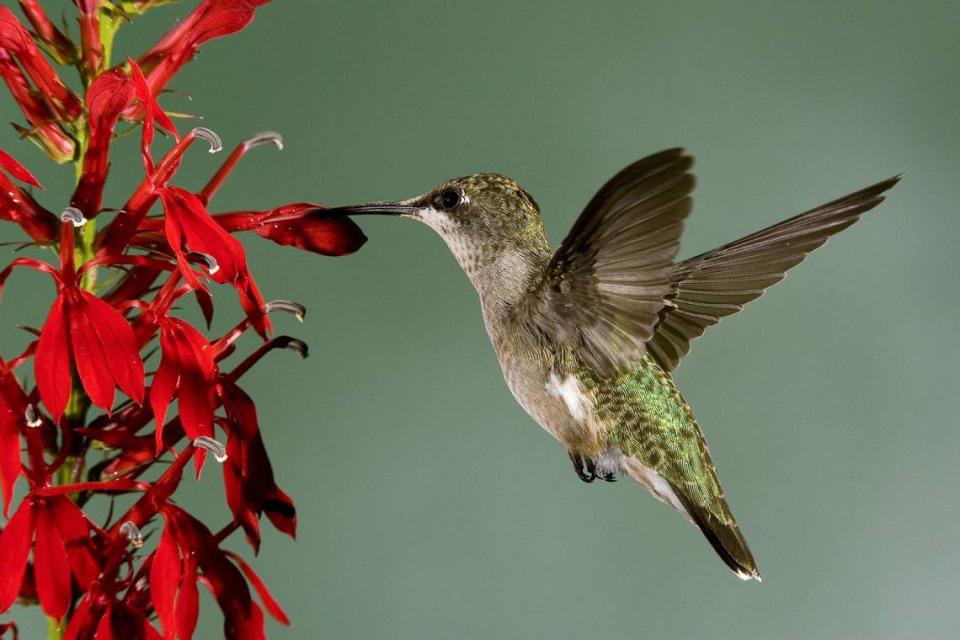
Hummingbirds, the real-life faeries of the Americas
According to Jennifer Schultz Nelson, Ph.D. and an adjunct professor at the University of Illinois at Urbana-Champaign, hummingbirds are uniquely American.
They can only be found in the Western Hemisphere, though their range extends from Alaska all the way down to the Tierra del Fuego, an archipelago at the southernmost tip of South America. Of the 366 species of hummingbirds, most are found in Central and South America.
As Barnes observed in his article about the ruby-throated hummingbird, “When most people think of hummers, they think of those in the western United States. That is where 16 different species breed in this country, but do not forget the rubythroat. It is a remarkable little bird and its beauty rivals many of its western counterparts.”
The male of the species is notable for its colorful plumage, which it uses to attract a mate.
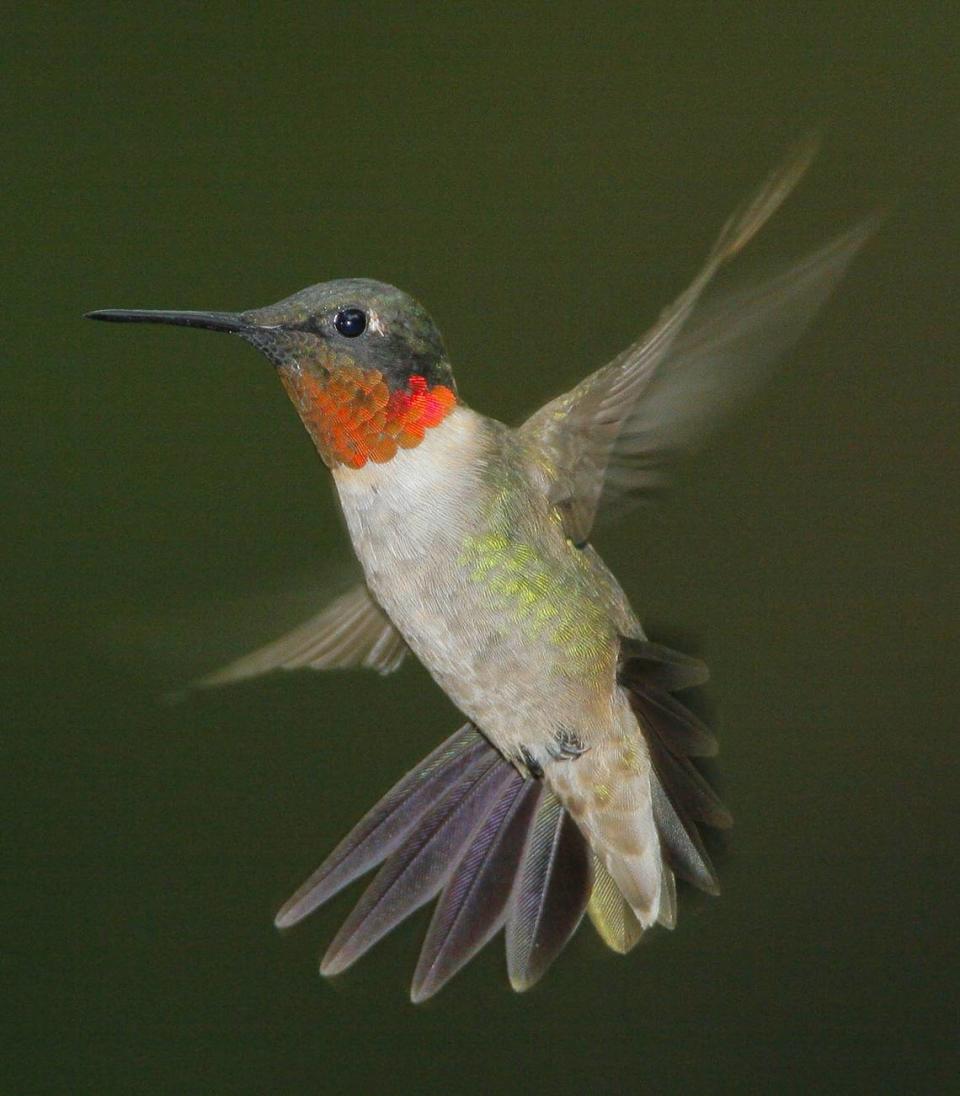
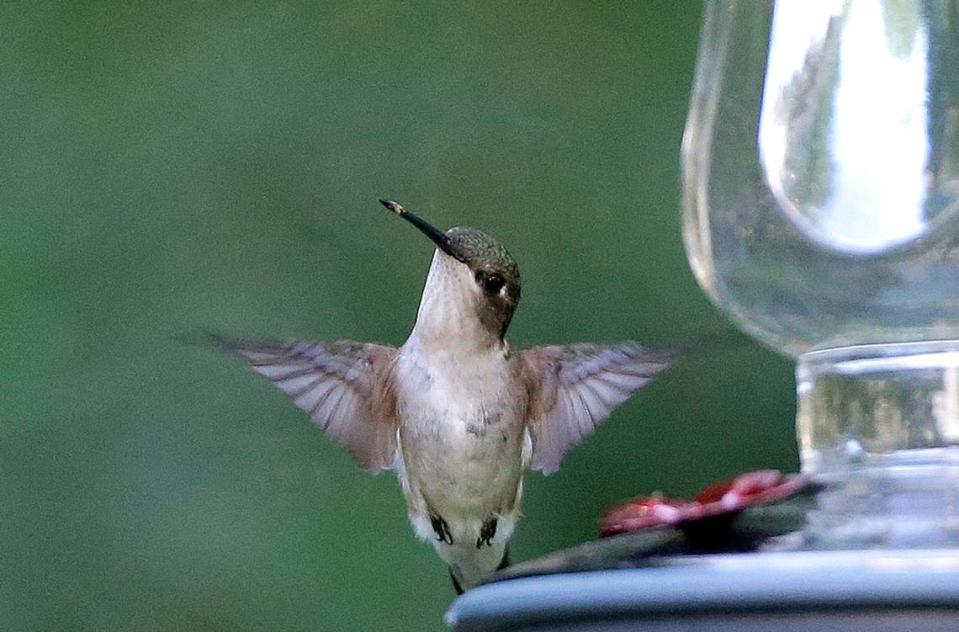
Here are some facts about ruby-throats and hummingbirds:
Its wings beat on average 53 times per second, according to Barnes. It can routinely cruise at about 27 miles per hour, although courtship flights can reach 60 miles per hour. Hummingbirds are the only avian species that can fly both backwards and upside down.
Ruby-throated hummingbirds have little or no song. Instead, males attract females with their flashy flight and iridescent, red throat patch.
A female can catch up to 2,000 insects per day.
Hummingbirds have been reported to fly as many as 500 miles in a single day. When it migrates south for the winter, the ruby-throat crosses the Gulf of Mexico on a non-stop journey of 18 to 20 hours, according to Nelson.
When the males arrive in the spring, they go through an elaborate courtship display, according to Barnes. Observers have seen part of their ritual: Females hang upside down on a branch, mesmerized while the male hovers above. Males will try to mate with several different females. After mating, females start nest building and chick rearing. The male departs. The female makes its nest using plant material encircled by pieces of spider webbing.
According to Barnes, each bird must eat 100 percent of its body weight in nectar every day to survive. Depending on air temperatures and activity levels, this means the birds feed anywhere from every five minutes to every hour. The rest of the time is spent resting and digesting the food.
According to Nelson, hummingbirds aren’t typically very social. This is likely because they have to compete for food or they fall into a deep sleep. Flowers produce nectar relatively slowly, so individual birds tend to stake out their claims and defend their favorite flowers.
How to get hummingbirds to visit your backyard
Contrary to popular belief, you likely won’t get a hummingbird to build a nest in your backyard, since they prefer undisturbed places like the deep woods.
According to Barnes, females typically nest 10 to 20 feet above the ground on a nearly horizontal branch and often above a spring or pond. Most nesting sites in Kentucky are located in deciduous trees, often sycamores or elm trees.
Barnes describes their nests as “about the size of half an English walnut shell, the tiny nest is made of plant down and bud scales covered with lichens. It is bound by spider’s silk.”
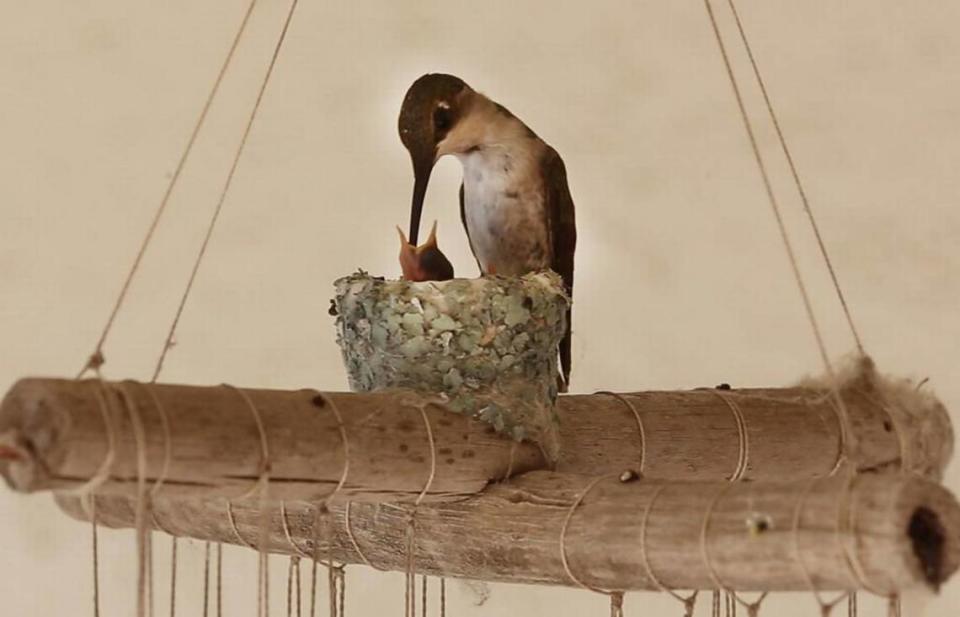
A hummingbird’s chicks grow rapidly. In just two-and-a-half weeks, they are fully feathered, have long beaks and are ready to fly. By three weeks, they’re on their own.
While your backyard won’t likely be a nesting site, it can be a food source for hummingbirds. According to Nelson, good flowers to plant to attract hummingbirds include:
Bee balm, Monarda didyma
Cardinal flower, Lobelia cardinalis
Trumpet creeper, Campsis radicans
Columbine, Aquilegia sp.
Hummingbird or cypress vine, Ipomoea quamoclit
Sage, salvia sp.
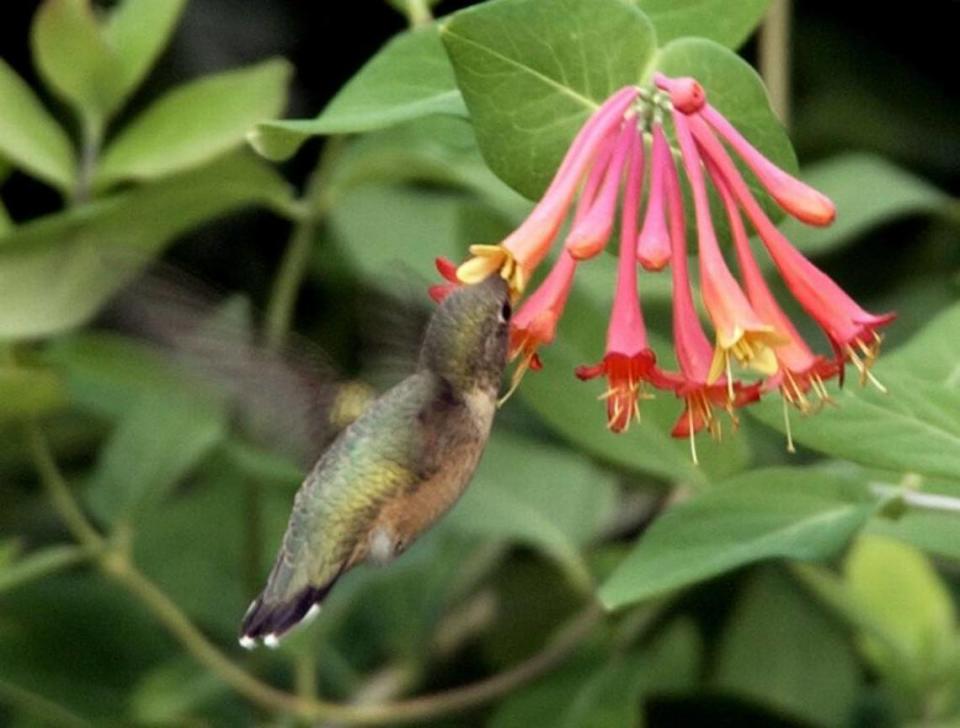
You can also use a feeder filled with sugar water to mimic nectar.
When it comes to looking for a feeder, Nelson recommends buying one you can easily fill and keep clean. If mold grows in the feeder, it could sicken or even kill hummingbirds. Change its water every three to five days to prevent mold growth and fermentation. You might need to change it more often on warm days.
A simple nectar recipe includes adding one cup of sugar to four cups of boiling water (this helps slow the spoilage by killing off bacteria). Stir the mixture until the sugar dissolves completely. Wait for it to cool, then use it to fill your feeders.
You can refrigerate leftovers for up to a week, and avoid using any food coloring as it may harm the birds.
As Nelson writes: “I’ve found that once I start feeding the hummingbirds, they get pretty demanding. I have been dive-bombed more than once while retrieving an empty feeder and returning with it filled. Maybe they are defending their nectar source, but I like to think it’s like they’re saying ‘It’s about time!’”
Do you have a question about wildlife in Kentucky for our service journalism team? We’d like to hear from you. Fill out our Know Your Kentucky form or email ask@herald-leader.com.

